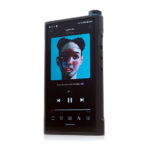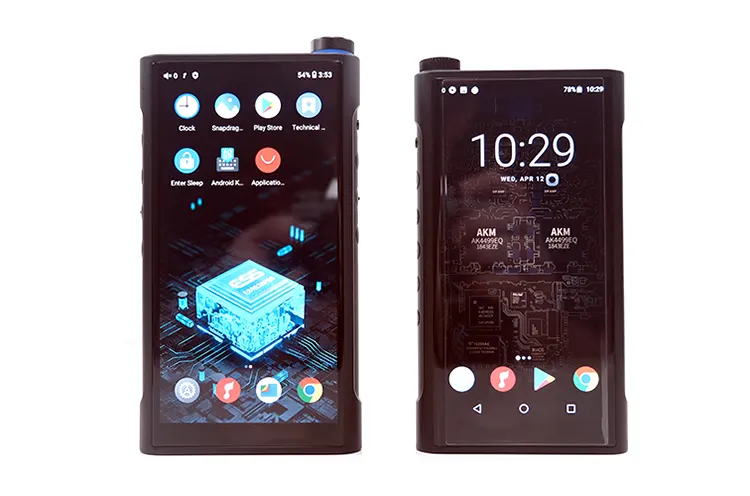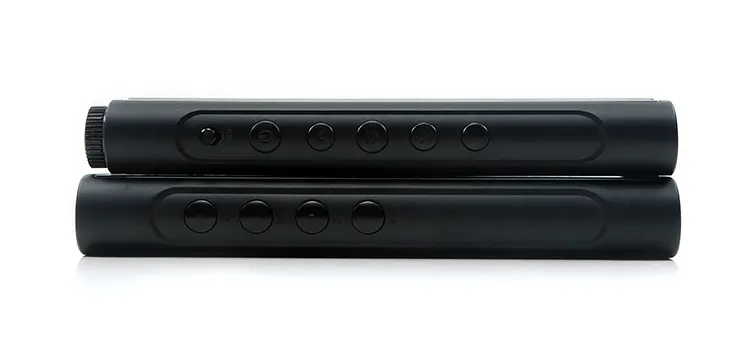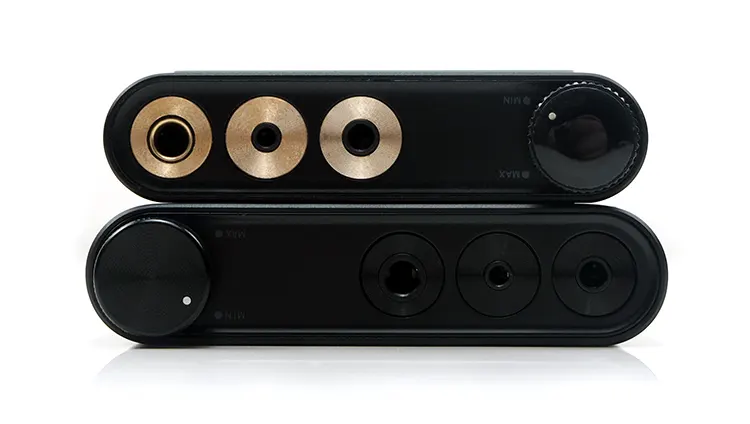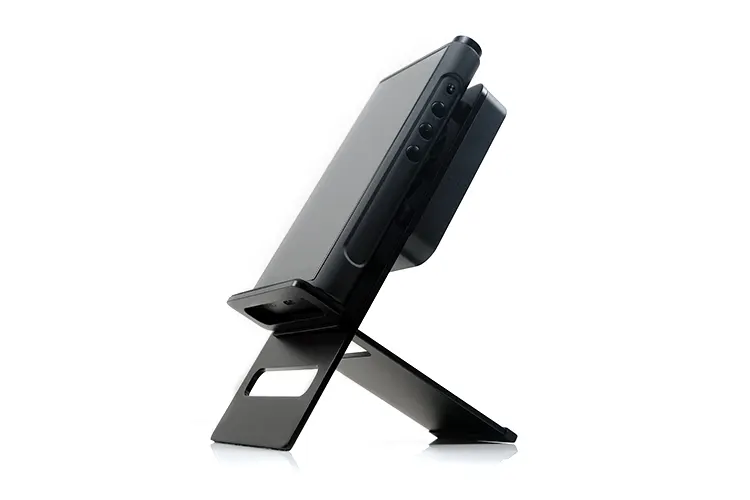In this feature, we review the FiiO M15S which is a 2nd gen Android 10 DAP using an ES9038PRO DAC and capable of up to 1.2W of output power. It is priced at $999.99.
Disclaimer: This was sent to us as a sample for our honest opinion. Headfonics is an independent website with no affiliate links or services. We thank FiiO for its support.
You can click here to learn more about the FiiO gear we have previously highlighted on Headfonics.
Note, that this post follows our latest scoring guidelines which you can read here.
The launch of the new M15S DAP is almost exactly 3 years after our review of the original M15 back in 2020. Now, I have not been terribly involved in all of FiiO’s “S” DAP reviews with James covering the likes of the M11s recently so I cannot give you comparisons on their popular mid-range player.
What I can do though is compare the M15S with the original and see what FiiO has tweaked or improved upon in the last 3 years, which, by the way, is like dog years in portable media technology. Things move very fast indeed.
One cool thing to note is the new $999 price point of the M15S which in today’s inflated market is quite reasonable. It also places it behind the flagship M17 in FiiO’s DAP ecosystem.
The original was also priced a lot higher at $1299 though it did have that now discontinued dual AK499EQ DAC inside that many DAP makers still lust after. The M15S internal setup is quite different this time around and we have the legacy of the M17 to thank for that.
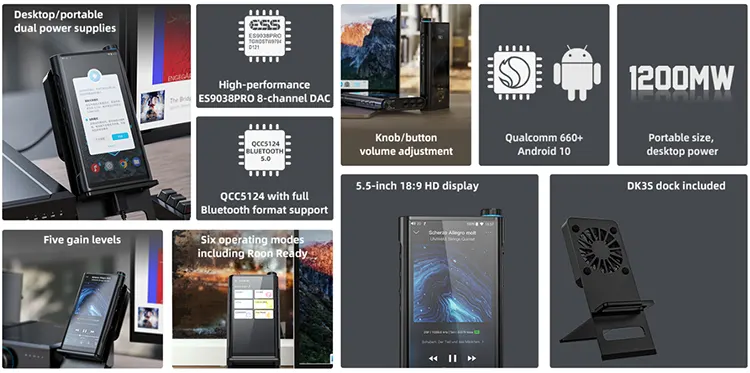
Tech Highlights
Summary
The FiiO M15S is a mid-to-high-end open Android 10-based portable audio player and an update on the original M15 DAP. It integrates some of the technology first seen on the flagship M17 as well as retaining and upgrading some of the aesthetical vibes from the 1st gen offering.
It has a wide range of applications including local playback in Android or Pure Music Mode as a portable media player with up to 9 hours, (balanced) to 10.5 hours, (SE) of playback time from a 6000mAh battery.
There is also wireless connectivity using both 2.4/5GHz WiFi and two-way BT5.0 via a QualcommQCC5124 chipset for 3rd party external streaming or integration into a DLNA or Airplay.
The M15s can also be used for wired digital audio via OTG or connected to a PC/Mac for USB-DAC and SPDIF wired modes, as well as being Roon Ready Certified.
Decoding Capability
Inside, is a single ES9038PRO 8-channel DAC chipset which is also the same DAC setup inside the recently released Q7, a portable AMP/DAC based on the M17 but at a price point not too far from the M15S.
Some might argue this is a downgrade on the dual AK4499EQ design of the M15 but you do have to remember we are working at a lower price point also.
Decoding is exactly the same as the M17 so it’s good but not class-leading at 32BIT/384kHz PCM and DSD256 natively and via its USB-DAC input. However, you can get up to 32BIT/768kHz and DSD512 if you use the M15S in USB Audio out mode.
MQA is also a little muted at 8X folding, similar to the M17 but a bit behind the likes of iBasso’s DX240 and HiBy’s RS6, both of which are rated at 16X. That means you can potentially unfold an MQA file that arrives as 24BIT/48K up to 24BIT/384K for playback.
FiiO is also making a big play about its 2-way BT capability. Both transmission and receiving go all the way up to LDAC 24BIT/96kHz and for receiving you get additional aptX LL and Adaptive codec compatibility.
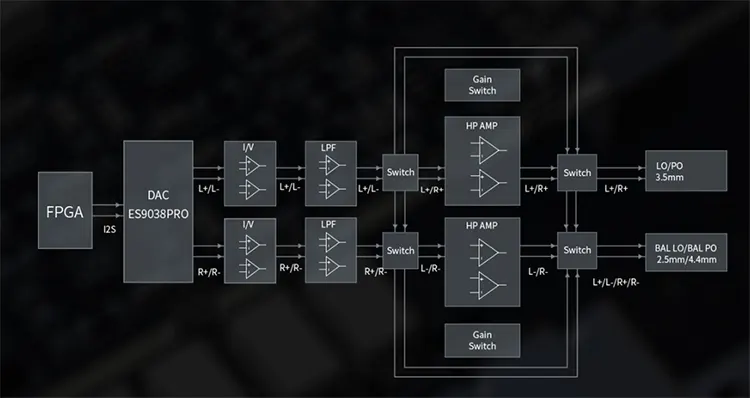
Amplification
This is where the thinking behind the M17 power and amplification capability comes into play and is perhaps the most salient feature of the M15S’s capability. The inclusion of a modified DK3S desktop stand/fan is a very good hint at what you are getting here.
You have two basic modes here with each mode offering its own PO output rating capacity. This includes a portable battery mode with up to 3950mW into a 32Ω @1kHz load per channel single-ended and 990mW on the same load going balanced.
However, the M15S now includes a desktop power mode that works in the same manner as the M17 DC power mode, albeit with a slightly different physical setup or connection process.
To activate the desktop mode, you simply connect a compatible quick charger and the included USB-C cable. Compatible formats include QC3.0, QC4.0 and PD2.0, and PD3.0. Once the M15S recognizes the quick charger it prompts if you want to go into the high power mode where you can also disconnect from the battery completely to conserve your battery life.
When in desktop mode, the M15S will receive an additional 3.3Vpp output voltage SE and 6.6Vpp going balanced. It will also increase the maximum output power to 580mW SE and 1.2W balanced under a 32Ω @1kHz load.
On top of that, you have five gain stage levels, four of which are immediately available in battery mode, and the final, labeled “Ultra High”, is activated when in desktop mode to give you that additional voltage and mW headroom.
Design
Form Factor
The FiiO M15s has a similar vibe to the original M15 but it is both bigger and heavier though not by a huge amount. It measures 140 x 80 x 18.9mm compared to the narrower and slightly shorter 134 x 75 x 18mm of the M15. Weight has increased slightly from 307g to 345g.
Some of that increased size is due to the larger screen real estate on the newer M15s going from 5.15″ to 5.5″ though it does retain the same level of resolution at 720p and both screens share a 320dpi density level.
A bigger screen combined with the more pleasing Android 10 menu layouts makes the M15S screen a more pleasurable UI experience compared to the older M15.
I have to note here that you do not get a screen protector this time for the screen. One only has to look at how difficult it was to apply screen protectors to the older M15’s curved gorilla glass to understand why. Still, if you want one you will have to buy a 3rd party version.
The rest of the additional sizing will be due to the internal space required for the M15S to ventilate, especially when in its higher gain modes.
One thing to note is despite the larger size the M15S uses a smaller battery compared to the original We are now down to 6000mAh from 7800mAh with roughly a 30% drop in lifespan from 15 hours maximum unbalanced to 10.5 hours using the same port under the same conditions.
I suspect the additional desktop mode dimension whereby you do not have to use the battery at all is a factor in the decision to decrease the size.
Aesthetics
Aesthetically, the M15S retains that “Bauhaus’ rational design concept” that was first eulogized by FiiO’s CEO James Chung during the development of the M15. The design shies away from the more aggressive mecha-styled edging of the M17 and the newer M11 series such as the M11s.
The finishing on the black CNC aluminum body of the M15S looks a lot more minimalistic than recent releases and a lot smoother for handling as a result. Physical buttons seem a little more prominent, shinier, and smoother to the touch as well as the M15’s analog port’s shiny gold finish replaced with a lower-profile black finish.
The design still has that prominent ADC curve-controlled analog potentiometer on the top panel only it’s a little less resistant in its movement. The knurling is also more refined now, with sizing overall slightly bigger and flatter without the glass-top finish and housed on the right as opposed to the left side of the DAP.
The M15S potentiometer still makes use of FiiO’s LED ring technology for sample rate indication during playback though the styling seems a little more prominent and not as bright compared to the older version.
Controls
Physical controls have also been tweaked and linked closely to how you manage your volume control on the M15S. On the original, you only had power, playback, and multifunction on the left panel.
That has now been split with playback and power still on the left panel but the multifunction moved to the similarly recessed right panel alongside some new additional digital volume buttons and the smaller lock button.
That means you can choose the style of volume control you want on the M15S, be it analog or digital, as opposed to just analog on the older M15.
If you find the analog potentiometer volume control a little on the aggressive side for movement then switching to the digital controls will inject some micro-level adjustment capability which is much appreciated.
I/O
The M15S has not changed its basic I/O configuration from the original version though aesthetically it looks quite different with the larger flatter pot moving to the other side of the top panel and the gold contacts now in black.
You get pretty much all you need for portable SE and balanced playback with a 4.4mm, 2.5mm TRRS, and 3.5mm SE output array. Only the M17 offers more in terms of PO outputs by including the 6.35mm SE output alongside.
Both the 3.5mm and 4.4mm ports also double up for SE and balanced line-out functionality with the 3.5mm offering an additional coaxial digital out dimension. There are no optical output options on the M15S, for that, you will have to buy the M17.
The base has a single charging/OTG and data transfer USB-C 3.0 socket with a single memory card pin tray slot. Sadly, no dual tray and only 64GB of onboard memory so you will need to stock up on bigger memory cards if you want a larger capacity level.
The USB-C socket will also trigger the desktop mode power level when connected to a compatible Quick Charge/PD Charging plug. Note, FiiO has not included a quick charging adaptor in the accessories though the USB-C to USB-C cable is PD compliant.
Packaging & Accessories
The FiiO M15S uses a slightly plainer packaging concept than the older M15 version and one that is consistent with FiiO’s latest graphical finishing in terms of external aesthetics.
Gone is the Kraft paper and wooden box packaging which I really liked but apparently deemed a dispensable factor in order to get down to the new price point. Instead, you now have a plainer cardboard box with a dual-layer foam set up inside.
The M15S unit itself is set on the top layer inside its accompanying new leather case and all the accessories are housed underneath.
Accessories
The accessory lineup is pretty good but one accessory stands out among all others and that is the new modified or miniaturized aluminum magnesium alloy DK3S stand/fan for using the M15S in desktop mode.
It comes in two pieces to help ship it flat and use up less space with both pieces looking together to form a rigid stand.
It has enough openings to run wires clearly from both the DAP and the back of the fan with a wide enough ledge to hold the M15S securely. Because it is smaller, the twin-speed USB-powered 5V fan inside is smaller also at about 50mm roughly as opposed to the M17’s DK3 80mm wide fan.
The second stand-out accessory is the new Dignis-designed leather case which is an upgrade on the original M15 tanned leather case. It has the new securing flaps at the top which I am seeing a lot now on the likes of the Cayin N7 and HiBy’s RS6 and helps to keep it very secure. It’s a good fit with an attractive open grill on the rear for venting.
Aside from that, you get a USB-C to A adaptor, your PD2.0 USB-C to USB-C charging/data cable, and a pin for opening the memory card slot.
Click on page 2 below for software impressions & wireless/wired performance





